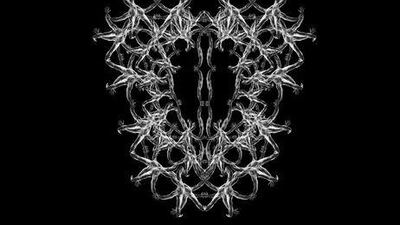Hazem Mahdy’s work has long tussled with the inner conflict of being an Egyptian who has never lived in Egypt. “There was an identity crisis in my earlier work,” says the artist, who was born and raised in the UAE. “In one series of photographs, for instance, I projected recognisably Egyptian patterns z my own body – questioning who I am in relation to Egypt, a country that I don’t feel I fit into.”
Mahdi’s first solo show, One, Wahed, Yi, Eins, Alpha, which opens tonight at the Dubai gallery Carbon 12, demonstrates a clear evolution in his thinking. He has photographed and digitally mirrored hundreds of his own arms, interlocking them into a fleshy kaleidoscope. The final works bear echoes of Islamic art motifs and shapes found in nature, and Mahdy is now concerned with expressing a spiritual oneness and interconnectedness rather than anxiety.
He explains that this new direction emerged from a deeply introspective period. This may not have put those earlier concerns to bed, but it has given them the wider perspective they needed.
Why do you make your own body a central part of your photographs?
My works are all self-portraits in the sense that, through photography, I try to express situations that I’ve experienced. Following on from my earlier work exploring that feeling of an identity crisis, I became a lot more religious and started doing meditation, which was how this idea of oneness came about. While meditating one day, I saw the roots of a tree made out of arms and hands. They were holding onto other trees and, as the image seemed to zoom out, I could see these connected hands turned into one vast grid.
We can see echoes of that motif in these new works. How did the series develop?
There are so many layers of inspiration in these works. While researching approaches for my solo show I got into fractal arts, which looks at how trees and plants grow in perfect symmetry. Fractal arts led to me looking at Islamic art, in which all of the patterns that are used to create plants, stars and animals are made from a single line. Then I started thinking about how the main essence of life is a carbon atom, which grows outward to create the different forms and shapes around us. So that’s what I tried to create – almost a carbon form out of my own body and grow a complex pattern from that.
How do you feel your practice has developed leading up to this show?
The more I grow in myself, the more my work grows. I started out with the perspective of having a crisis of identity but my art has now become much more layered. Previously, I was expressing one concept from one perspective. Now I’m discussing a more general concept that is part of the human condition. I feel the need to really effect the person that looks at my artworks and try to do that from a perspective that they can understand.
• Until January 10 at Carbon 12, Alserkal Avenue, Dubai

